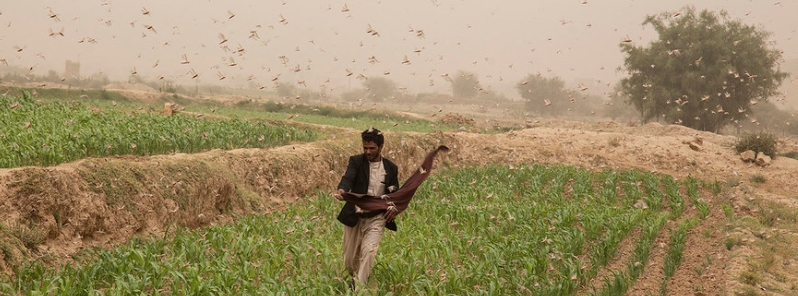New locust outbreak hits Southern Africa, 45 million people at risk of food shortage

A new locust outbreak has been reported in parts of Southern Africa in October 2020, threatening wide swaths of crops and grasslands. Namibia, Botswana, Zimbabwe, Zambia, South Africa, and Angola have been affected so far, and according to the Southern African Development Community (SADC), 45 million people could face food shortages.
Parts of southern Africa are now facing a new locust plague following a similar one that has swept through East Africa this year.
In Eastern Cape, South Africa, the outbreak has been reported in the Sarah Baartman and Chris Hani districts. According to the Department of Rural Development and Agrarian Reform, about 127 farms have been suffering from the swarms' infestations.
"The outbreak is in the Karoo parts of the Eastern Cape, where the insects are competing with livestock for grass. But if they are not controlled they might migrate to crops and vegetables," said the department's entomologist, Nolitha Skenjana.
On October 29, Eben du Plessis of Agri Eastern Cape said it would be too early to identify the impacts. "They are moving east. They come from the Northern Cape and hatch at a drier area and start moving east. At this stage, there’s not a lot of damage."
"Locusts go through about five stages of development and are currently walking. They hatch and find each other and create swarms. They do eat, but the damage is minimal," he explained.
"It becomes difficult to locate them. You have to wait for the weather to cool in the late afternoon, and as it gets darker they settle down for the night. That’s when you spray them."
He continued, "When they settle down they’ve doubled in size, are hungry and need more energy, and that’s when they do a lot of damage."
"This is a developing crisis. You can only see the impact once it’s done because they are hatching as they go," du Plessis reiterated.
"They can be vigilant and look out for locusts and report them to make sure they are sprayed. That is basically all they can do. In the past farmers have tried to burn tires and old motor oil to create a barrier, but that’s not really effective."
Other southern African countries that reported new outbreaks were Namibia, Botswana, Zimbabwe, Zambia, and Angola.
This has put the livelihoods of farmers and cattle herders at stake, who have already been dealing with food shortages. SADC warned that 45 million people could also face food shortages as a result of the devastation.
"Food security will be seriously impacted because newly planted crops and any crops that are currently standing in the fields right now are at risk of being totally annihilated," said Farayi Zimudzi, leader of the FAO-bureau in Windhoek.
In an update on November 2, the UN FAO noted that control operations are ongoing for areas affected by locusts in the Horn of Africa.
Featured image credit: FAO Emergencies

Commenting rules and guidelines
We value the thoughts and opinions of our readers and welcome healthy discussions on our website. In order to maintain a respectful and positive community, we ask that all commenters follow these rules.